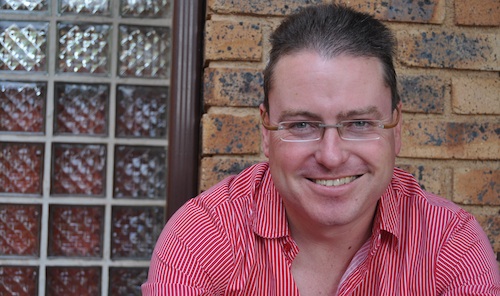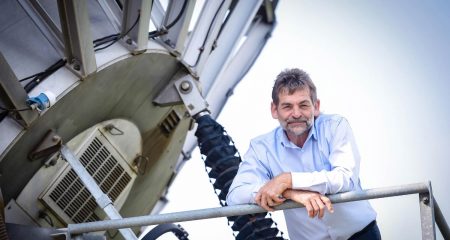
[By Duncan McLeod]
Just as undersea and terrestrial fibre connectivity is booming around and in Africa, an explosion in satellite capacity serving the region is also under way. The “dark continent” is getting connected to the global village.
This week’s annual Satcom conference in Sandton was a hive of activity, with international operators talking up billions of dollars in satellite projects to provide connectivity to Africa.
Luxembourg-based SES, the world’s second largest satellite operator after Intelsat, says the continent is about to enjoy a boom in satellite services not unlike the growth the Latin American market has seen in recent years.
SES has 12 satellites under construction, some of which are destined to serve Africa.
The company’s senior vice-president for global sales, Scott Sprague, says investment in fibre-optic telecommunications infrastructure will propel rather than impede demand for satellite services. It makes sense. As the continent is encircled in new, high-capacity fibre lines, the challenge becomes providing connectivity to businesses and consumers inland, especially in landlocked countries where fibre backhaul links are poorly developed or nonexistent.
There are plenty of terrestrial fibre projects under way across parts of Africa, especially in Southern Africa and markets in East Africa, where demand for broadband is surging. But other parts of the continent remain largely unserved by this investment.
It’s a gap that Andile Ngcaba, chairman of Convergence Partners, saw early on. He’s an investor in Intelsat New Dawn, a new communications satellite for the region.
Unfortunately, New Dawn has had a troubled birth. Its first attempt at launch earlier this year was aborted. It finally blasted off into space in late April, but it’s having trouble deploying its “west antenna reflector”, which controls communication in the important C-band frequency. Orbital Sciences Corp, which manufactured the satellite, is working on the problem.
Already, a number of companies, including SA ’s Skyevine, a joint venture between Ellies Group and Q-Kon, are planning to use New Dawn to provide Internet access in rural parts of the continent and to complement existing networks.
Skyevine CEO Steve Rich told me this week that the cost of satellite connectivity has fallen to such an extent in recent years that it now sometimes makes sense to use it as a replacement for conventional terrestrial networks.
The company plans to offer services across sub-Saharan Africa and is promising download speeds of 4Mbit/s at fees that will be “affordable” for high-end consumers and small businesses. It hopes to sign up between 5 000 and 10 000 subscribers a year across the region.
There are plenty of other projects under way to serve the region. One of the most exciting is O3b Networks. Founded by Gary Wyler, O3b Networks — the O3b stands for the “other three billion” of the world’s people who are not connected — wants to make the Internet “accessible and affordable” to those who remain cut off from the Web when it launches its US$1,2bn constellation of satellites in 2012/2013.
Backed by companies such as Google, SES and Liberty Global and by the Development Bank of Southern Africa, O3b’s satellites will orbit just 8 000km above the earth — about four times closer than geostationary satellites — promising “lower latency” (less delay in the network) and faster connectivity.
This week, the company signed a deal with SA’s Mavoni Technologies to bring “fibre-like speeds” to places such as Limpopo, Mpumalanga and the Northern Cape and is promising to take connectivity to more than 2 000 rural schools.
- Duncan McLeod is editor of TechCentral; this column is also published in Financial Mail
- Subscribe to our free daily newsletter
- Follow us on Twitter or on Facebook




